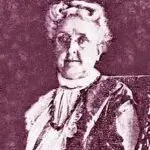Week of July 1, 2018
The Point: We do not live for ourselves; we serve God by serving others.
The Effect of Pentecost: Acts 2:37-47.
[37] Now when they heard this they were cut to the heart, and said to Peter and the rest of the apostles, “Brothers, what shall we do?” [38] And Peter said to them, “Repent and be baptized every one of you in the name of Jesus Christ for the forgiveness of your sins, and you will receive the gift of the Holy Spirit. [39] For the promise is for you and for your children and for all who are far off, everyone whom the Lord our God calls to himself.” [40] And with many other words he bore witness and continued to exhort them, saying, “Save yourselves from this crooked generation.” [41] So those who received his word were baptized, and there were added that day about three thousand souls. [42] And they devoted themselves to the apostles’ teaching and the fellowship, to the breaking of bread and the prayers. [43] And awe came upon every soul, and many wonders and signs were being done through the apostles. [44] And all who believed were together and had all things in common. [45] And they were selling their possessions and belongings and distributing the proceeds to all, as any had need. [46] And day by day, attending the temple together and breaking bread in their homes, they received their food with glad and generous hearts, [47] praising God and having favor with all the people. And the Lord added to their number day by day those who were being saved. [ESV]
“[37-39] Luke now describes the crowd’s response to Peter’s sermon, together with Peter’s reply. Cut to the heart, that is, convicted of sin and conscience-stricken, Peter’s hearers asked anxiously what they should do [2:37]. Peter replied that they must repent, completely changing their mind about Jesus and their attitude to Him, and be baptized in His name, submitting to the humiliation of baptism, which Jews regarded as necessary for Gentile converts only, and submitting to it in the name of the very person they had previously rejected. This would be a clear, public token of their repentance – and of their faith in Him. Though Peter does not specifically call on the crowd to believe, they evidently did so, since they are termed believers in verse 44, and in any case repentance and faith involve each other, the turn from sin being impossible without the turn to God, and vice versa [3:19]. And both are signified by baptism in Christ’s name, which means by His authority, acknowledging His claims, subscribing to His doctrines, engaging in His service, and relying on His merits. Then they would receive two free gifts of God – the forgiveness of their sins (even of the sin of rejecting God’s Christ) and the gift of the Holy Spirit (to regenerate, indwell, unite and transform them). God’s promise of these two gifts are for everyone whom the Lord our God calls to himself [2:39]. Everyone God calls to Himself through Christ receives both gifts. The gifts of God are coextensive with the call of God.
[40-41] Luke adds that this was not the end of Peter’s sermon, for with many other words he bore witness and continued to exhort them [2:40]. And the essence of his warnings and pleadings was the appeal: Save yourselves from this crooked generation. That is, Peter was not asking for private and individual conversions only, but for a public identification with other believers. Commitment to the Messiah implied commitment to the Messianic community, that is, the church. Indeed, they would have to change communities, transferring their membership from one that was old and corrupt to one that was new and being saved [2:47]. The amazing response to Peter’s appeal is now recorded. Large numbers of people received his word (i.e., repented and believed), and in consequence were baptized. In fact, about three thousand souls were added to their number that day [2:41].
The Church’s Life: the Effect of Pentecost [42-47]. Having first described in his own narrative what happened on the day of Pentecost, and then supplied an explanation of it through Peter’s Christ-centered sermon, Luke goes on to show us the effects of Pentecost by giving us a beautiful little cameo of the Spirit-filled church. Luke describes in these verses four evidences of the presence and power of the Holy Spirit in the Spirit-filled church. 1. It was a learning church. The very first evidence Luke mentions of the Spirit’s presence in the church is that they devoted themselves to the apostles’ teaching. One might perhaps say that the Holy Spirit opened a school in Jerusalem that day; its teachers were the apostles whom Jesus had appointed; and there were 3,000 pupils in the kindergarten! We note that those new converts were not enjoying a mystical experience, which led them to despise their mind or disdain theology. Anti-intellectualism and the fullness of the Spirit are mutually incompatible, because the Holy Spirit is the Spirit of truth. Nor did those early disciples imagine that, because they had received the Spirit, He was the only teacher they needed and they could dispense with human teachers. On the contrary, they sat at the apostles’ feet, hungry to receive instruction, and they persevered in it. Moreover, the teaching authority of the apostles, to which they submitted, was authenticated by miracles: many wonders and signs were being done through the apostles [43]. The two references to the apostles, in verse 42 (their teaching) and in verse 43 (their miracles), can hardly be an accident. Since the teaching of the apostles has come down to us in its definitive form in the New Testament, contemporary devotion to the apostles’ teaching will mean submission to the authority of the New Testament. A Spirit-filled church is a New Testament church, in the sense that it studies and submits to New Testament instruction. The Spirit of God leads the people of God to submit to the Word of God. 2. It was a loving church. They devoted themselves to the … fellowship. Fellowship (koinonia) bears witness to the common life of the church in two senses. First, it expresses what we share in together. This is God Himself, for our fellowship is with the Father and with his Son Jesus Christ [1 John 1:3], and there is the fellowship of the Holy Spirit [2 Cor. 13:14]. Thus koinonia is a Trinitarian experience; it is our common share in God, Father, Son and Holy Spirit. But secondly, koinonia also expresses what we share out together, what we give as well as what we receive. Koinonia is the word Paul used for the collection he was organizing among the Greek churches [2 Cor. 8:4; 9:13]. It is this meaning of fellowship that Luke is particularly referring here, because he goes on at once to describe the way in which these first Christians shared their possessions with one another [44-45]. These are disturbing verses. Do they mean that every Spirit-filled believer and community will follow their example literally? A few miles east of Jerusalem the Essene leaders of the Qumran community were committed to the common ownership of property. Did the early Christians imitate them, and should we do so today? At different times in church history some have thought so and done so. And I do not doubt that Jesus still calls some of His disciples, as He did the rich young ruler, to a life of total, voluntary poverty. Yet neither Jesus nor His apostles forbade private property to all Christians. It is important to note that even in Jerusalem the sharing of property and possessions was voluntary. According to verse 46, day by day the church was breaking bread in their homes. So evidently many still had homes; not all had sold them. It is also noteworthy that the tense of both verbs in verse 45 is imperfect, which indicates that the selling and the giving were occasional, in response to particular needs, not once and for all. Further, the sin of Ananias and Sapphira was not greed or materialism but deceit; it was not that they had retained part of the proceeds of their sale, but that they had done so while pretending to give it all. Peter made this plain when he said to them: While it remained unsold, did it not remain your own? And after it was sold, was it not at your disposal? [5:4]. At the same time, although the selling and the sharing were and are voluntary, and every Christian has to make conscientious decisions before God in this matter, we are all called to generosity, especially towards the poor and needy. Already in the Old Testament there was a strong tradition of care for the poor, and the Israelites were to give a tenth of their produce to the Levite, the alien, the fatherless and the widow. The principle is stated twice in the Acts: they gave to anyone as any had need [45], and there was not a needy person among them … it was distributed to each as any had need [4:34-35]. As John was to write later, if we have material possessions and see a brother or sister in need, but do not share what we have with him or her, how can we claim that God’s love dwells in us [1 John 3:17]. Christian fellowship is Christian caring, and Christian caring is Christian sharing. So we must not evade the challenge of these verses. It is part of the responsibility of Spirit-filled believers to alleviate need and abolish destitution in the new community of Jesus. 3. It was a worshipping church. They devoted themselves … to the breaking of bread and the prayers. That is, their fellowship was expressed not only in caring for each other, but in corporate worship too. Moreover, the definite article in both expressions (the) suggests a reference to the Lord’s Supper on the one hand (although almost certainly at that early stage as part of a larger meal) and prayer services or meetings (rather than private prayer) on the other. There are two aspects of the early church’s worship which exemplify its balance. First, it was both formal and informal, for it took place both in the temple courts and in their homes [46], which is an interesting combination. It is perhaps surprising that they continued for a while in the temple, but they did. They did not immediately abandon what might be called the institutional church. I do not believe they still participated in the sacrifices of the temple, for already they had begun to grasp that these had been fulfilled in the sacrifice of Christ, but they do seem to have attended the prayer services of the temple, unless, as has been suggested, they went up to the temple to preach, rather than to pray. At the same time, they supplemented the temple services with more informal and spontaneous meetings (including the breaking of bread) in their homes. It is always healthy when the more formal and dignified services of the local church are complemented with the informality and exuberance of home meetings. There is no need to polarize between the structured and the unstructured, the traditional and the spontaneous. The church needs both. The second example of the balance of the early church’s worship is that it was both joyful and reverent. There can be no doubt of their joy, for they are described as having glad and generous hearts [46], which literally means ‘in exultation and sincerity of heart’. Since God had sent His Son into the world, and had now sent them His Spirit, they had plenty of reason to be joyful. Every worship service should be a joyful celebration of the mighty acts of God through Jesus Christ. It is right in public worship to be dignified; it is unforgivable to be dull. At the same time, their joy was never irreverent. If joy in God is an authentic work of the Spirit, so is the fear of God. And awe came upon every soul [43], which seems to include the Christians as well as the non-Christians. God had visited their city. He was in their midst, and they knew it. They bowed down before Him in humility and wonder. It is a mistake, therefore, to imagine that in public worship reverence and rejoicing are mutually exclusive. The combination of joy and awe, as of formality and informality, is a healthy balance in worship. 4. It was an evangelistic church. So far we have considered the study, the fellowship and the worship of the Jerusalem church, for it is to these three things that Luke says the first believers devoted themselves. Yet these are aspects of the interior life of the church; they tell us nothing about its compassionate outreach to the world. Those first Jerusalem Christians were not so preoccupied with learning, sharing and worshipping, that they forgot about witnessing. For the Holy Spirit is a missionary Spirit who created a missionary church. From these earliest believers in Jerusalem, we can learn three vital lessons about local church evangelism. First, the Lord Himself did it: the Lord added to their number [47]. Doubtless He did it through the preaching of the apostles, the witness of church members, the impressive love of their common life, and their example as they were praising God and having favor with all the people. Yet He did it. For He is the head of the church. He alone has the prerogative to admit people into its membership and to bestow salvation from His throne. This is a much needed emphasis, for many people talk about evangelism today with reprehensible self-confidence and even triumphalism, as if they think the evangelization of the world will be the ultimate triumph of human technology. We should harness to the evangelistic task all the technology God has given us, but only in humble dependence on Him as the principal evangelist. Secondly, what Jesus did was two things together: the Lord added to their number … those who were being saved (a present participle emphasizing that salvation is a progressive experience culminating in final glorification). He did not add them to the church without saving them (no nominal Christianity at the beginning), nor did He save them without adding them to the church (no solitary Christianity either). Salvation and church membership belonged together; they still do. Thirdly, the Lord added people day by day. The verb added is an imperfect (kept adding) and the adverb day by day puts the matter beyond question. The early church’s evangelism was not an occasional or sporadic activity. Just as their worship was daily [46], so was their witness. Praise and proclamation were both the natural overflow of hearts full of the Holy Spirit. And as their outreach was continuous, so continuously converts were being added. We need to recover this expectation of steady and uninterrupted church growth.
Conclusion. Looking back over these marks of the first Spirit-filled community, it is evident that they all concerned the church’s relationships. First, they were related to the apostles (in submission). They were eager to receive the apostles’ instruction. A Spirit-filled church is an apostolic church, a New Testament church, anxious to believe and obey what Jesus and His apostles taught. Secondly, they were related to each other (in love). They persevered in the fellowship, supporting each other and relieving the needs of the poor. A Spirit-filled church is a loving, caring, sharing church. Thirdly, they were related to God (in worship). They worshipped Him in the temple and in the home, in the Lord’s Supper and in the prayers, with joy and with reverence. A Spirit-filled church is a worshipping church. Fourthly, they were related to the world (in outreach). They were engaged in continuous evangelism. No self-centered, self-contained church (absorbed in its own parochial affairs) can claim to be filled with the Spirit. The Holy Spirit is a missionary Spirit. So a Spirit-filled church is a missionary church. The Holy Spirit has never left His church. Our responsibility is to humble ourselves before His sovereign authority, to determine not to quench Him, but to allow Him His freedom. For then our churches will again manifest those marks of the Spirit’s presence, which many young people are specially looking for, namely biblical teaching, loving fellowship, living worship, and an ongoing, outgoing evangelism.” [Stott, pp. 77-87].
Questions for Discussion:
- What does Peter mean by repent and be baptized? What is the relationship of faith to repentance and baptism? What two gifts will those who repent and are baptized receive?
- What evidence did the early church give of the presence and power of the Holy Spirit? What four evidences does Luke give? How can our local churches better show these same four evidences?
- How does Stott describe the meaning of Biblical fellowship (koinonia)? What two elements of fellowship does Stott give (sharing in God; sharing out together)? What is the relationship between these two elements (sharing in God is primary; all sharing out together must flow out of a prior sharing in God)? Do these two elements describe fellowship in your church?
- From these earliest believers in Jerusalem, what three vital lessons can we learn about local church evangelism? Based upon these three lessons, is there anything your local church needs to change in its evangelism ministry?
References:
Acts, Darrell Bock, ECNT, Baker.
The Acts of the Apostles, David Peterson, Eerdmans.
The Message of Acts, John Stott, Inter Varsity.
Acts, Derek Thomas, REC, P & R Publishing.

















